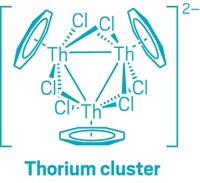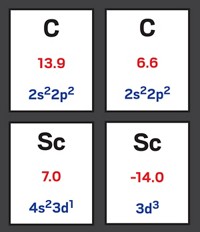Advertisement
Grab your lab coat. Let's get started
Welcome!
Welcome!
Create an account below to get 6 C&EN articles per month, receive newsletters and more - all free.
It seems this is your first time logging in online. Please enter the following information to continue.
As an ACS member you automatically get access to this site. All we need is few more details to create your reading experience.
Not you? Sign in with a different account.
Not you? Sign in with a different account.
ERROR 1
ERROR 1
ERROR 2
ERROR 2
ERROR 2
ERROR 2
ERROR 2
Password and Confirm password must match.
If you have an ACS member number, please enter it here so we can link this account to your membership. (optional)
ERROR 2
ACS values your privacy. By submitting your information, you are gaining access to C&EN and subscribing to our weekly newsletter. We use the information you provide to make your reading experience better, and we will never sell your data to third party members.
Materials
First-ever solid-state iron-bismuth compound created
Elusive species completes iron pnictide series
by Jyllian Kemsley
October 28, 2016
| A version of this story appeared in
Volume 94, Issue 43

The first-ever solid-state material reported to contain iron-bismuth bonds, FeBi2, has been prepared by a team led by Danna E. Freedman of Northwestern University (ACS Cent. Sci. 2016, DOI: 10.1021/acscentsci.6b00287).
Iron and bismuth each react with multiple elements across the periodic table but are largely immiscible with each other, despite the fact that iron readily combines with all of the other group 15 elements to form superconducting materials. Chemists currently don’t understand the lack of reactivity between iron and bismuth.
Freedman and colleagues created FeBi2 by combining the two elements in a diamond anvil cell at 30 gigapascals and 1,500 K. In the crystal structure, each iron atom is coordinated by eight bismuth atoms arranged into squares above and below the iron. The squares of bismuth atoms sit twisted relative to each other.
The high pressure stabilizes the Fe–Bi bonds in the material, which is also held together by Bi–Bi bonds. The Fe–Bi bond lengths are 0.2719 nm, while the Bi–Bi interactions range from 0.2948 to 0.3419 nm.
The researchers were able to decompress the FeBi2 down to 3 GPa before it decomposed. That behavior suggests that there might be a way to quickly cool and slowly decompress the material to study and perhaps even use it at ambient pressure—0.0001 GPa—and low temperature, the researchers say.




Join the conversation
Contact the reporter
Submit a Letter to the Editor for publication
Engage with us on Twitter